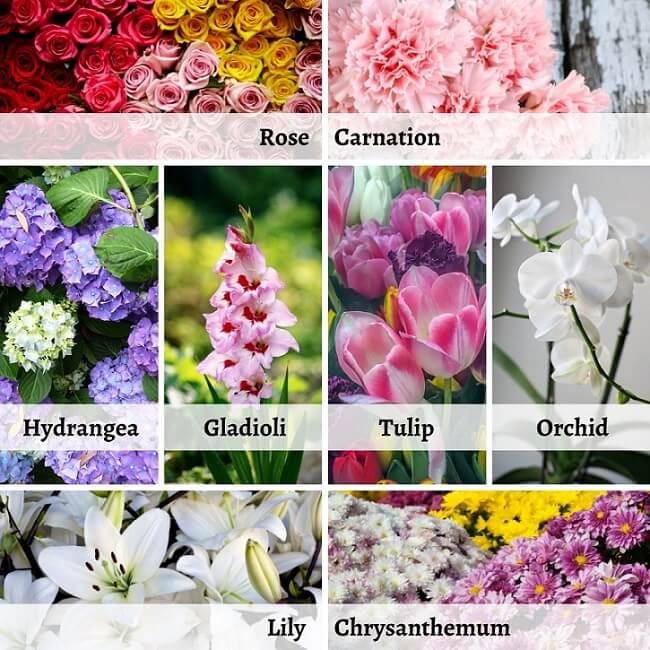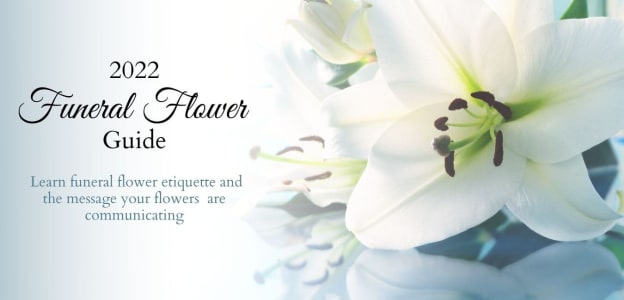The passing of a friend or loved one is a difficult time. Most people are faced with the common dilemma of wanting to express love and care but do not know how to best do that. Whether or not you can be at the viewing or graveside service, flowers can be a good way to let the family know you are thinking of them. Proper etiquette during this time is important. This guide is designed to help you express your sentiments in an appropriate way that will be best received by the grieving family.
Funeral Flowers: What Does the Family Prefer?
Each family has different preferences that may be influenced by anything from religious beliefs to personal values. It is most important to follow the family's wishes when sending gifts. One of the best sources for this information is the obituary. In addition to listing characteristics, hobbies, and surviving family members, the obituary typically lists the location of the memorial service and the family’s preferences for flowers or donations. Often flowers are a welcomed gesture of sympathy and love, but if the family lists a donation to a charity or cause “in lieu of” (or in place of) flowers, it is best to honor that request.
Another good source of information is the funeral director. Many preparations need to be made when someone passes, and the funeral director spends a fair bit of time guiding the family through the process. Even if the family has not directly discussed their preference for flowers, the director will know enough to give you some solid direction.
Funeral Flowers: What Type of Flowers Should I Send?
This is a common question that deserves some attention. The type of flowers included in an arrangement can convey a message and you want that to be accurate to your sentiments.
Roses – Elegance, fragrance, and versatility mark this stunning flower. Roses come in a variety of colors that give different messages. When it comes to sympathy flowers, these colors are most appropriate.
- White – A white rose can be a symbol of purity or respect. This is often determined by whether the deceased is a child or an adult. As a general rule, white is a safe color for funerals no matter which type of flower you are including in the arrangement.
- Yellow – As in other occasions for roses, yellow roses stand as a symbol of close friendship.
- Deep Crimson – This color communicates a sense of deep sorrow or significant grief.
Carnations – This flower is a wonderfully functional flower to use for a sympathy arrangement as it lasts for quite some time. If there are a couple of days of visitation before the actual funeral service, the carnations will stand the test of time. As with many other types of flowers, white carnations stand for purity and innocence. The symbolic meanings can characterize any number of things including the person or the relationship. Pink carnations stand for memories of the deceased. Red carnations stand for respect and admiration.
Hydrangeas – Potted flowers are a great way to show that you care, the day of the funeral or even weeks or months afterward. The hydrangea conveys a sense of sincerity and long-lasting memories. When the family is ready, and the weather is appropriate, they can plant the hydrangea in the yard and enjoy blooms for years to come.
Gladioli – The gladioli blooms vertically on the stem, and thus, represents character, strength, and moral fortitude. They come in a wide variety of colors which makes this flower a versatile choice to include in a spay or other arrangement.

Tulips and Daffodils – These flowers work well together as a combination of grace and hope. The daffodil is like a smile on the face of a little child. It brings a sense of encouragement. Tulips are uplifting and elegant. The various colors of tulips can also help relay a message.
- White – Forgiveness; Purity
- Red – Love
- Purple – Solidarity; loyalty
- Yellow – Joy; cheerful hope
Orchid – This flower is undoubtedly the longest-lasting flower (with proper care). An orchid can live for decades which is why it symbolizes eternal love. As a potted option, orchids lend themselves to being placed in a wide variety of places that other arrangements may not fit. The most popular colors that communicate a message of sympathy are white, pink, and purple.
Lilies – Lilies are unquestionably the most used sympathy flower. Even more so than other flowers, white is an excellent choice as lilies are a symbol of the loved one’s soul that has departed. Innocence, purity, and majesty are embodied within these flowers.
Chrysanthemum – This is a commonly used sympathy flower, but it has vastly different meanings depending upon the culture of the family. In the U.S. chrysanthemums stand for a positive celebration of life. In Korea, China, and Japan, white mums symbolize significant grief or lament. In some European countries, mums are used only in funerals as they are a definite symbol of death.
If you want to include other flowers in a bouquet or arrangement than what are listed here, that is ok. The flowers listed above are just some of the most commonly used flowers. Your local florist can help you put together a great arrangement that will communicate you message. If you are not sure what to include on the funeral flower card, your florist can give you some ideas for that as well.
Funeral Flowers: Arrangement Etiquette
Now that you are more knowledgeable about what types of flowers are customary for funerals, let's look at arrangements. If you want the super short version, the larger arrangements should be reserved for the immediate family. The closer you are related to the deceased, the more appropriate it is for the arrangements to be located closer to the casket. That is the general rule but keep reading for a few more specifics. Remember that the specific type of arrangement that you send is far less important than your presence and love.
Casket Arrangements – These are typically a larger arrangement such as a spray. This is reserved for immediate family. Small arrangements or gifts that would be placed in the casket itself are also limited to family.
Side Sprays – Often there are arrangements (often sprays on an easel) that are placed on both sides of the casket. These arrangements are typically purchased by close family and can be accompanied by a ribbon or note that specifies the relationship of those who purchased the arrangement. Grandchildren or siblings would usually purchase something along these lines.
Shaped Arrangements - Funeral arrangements can come in various shapes that symbolize different sentiments. Hearts (for love and care), Crosses (for faith), and Wreaths (for eternity) are some of the most popular options. These can be purchased by the family, extended family, and in some cases, close friends.
Potted Flowers – These are a great option for friends and co-workers to send to the family of the deceased. Potted arrangements are perfect for sending to the family's home. They can be displayed at the funeral home, but that will ultimately be up to the funeral director.
Something to keep in mind is that the family will be grieving for quite some time. If you missed the funeral or just want to let them know you are thinking of them after the funeral, sending a vase or arrangement to their home is a great idea. Another thing to consider is that if you want your arrangement to be displayed at the funeral/visitation location, you may want to avoid sending a glass vase. Some locations have restrictions against glass elements.
Funeral Flowers: Additional Considerations
As we mentioned earlier in the funeral director is an excellent resource. If you want to send flowers to the family but are not sure if they should go to the funeral home or the family’s home, the funeral director will know what is best. If you do not know the family’s home address, the funeral director can make sure that the family gets the flowers. The arrangement or vase may not be displayed at the service, but the family will be able to take them home and will be aware of your condolences. Flowers that are intended to be a part of the funeral service, should be delivered several hours before the service at the funeral location.
Religious culture is another thing to keep in mind. If the family is Jewish or Islamic, flowers are not customarily a part of a memorial service. In the recent past, flowers were considered a breach of etiquette. Sending red flowers to a Buddhist funeral is considered to be in bad taste because red is a symbol of joy and happiness.
Working with professional service providers such as a local flower shop, mortician, or funeral home can make difficult decisions much clearer. Lean on the years of experience these professionals have built over their careers. When you have a question, don’t hesitate to ask. Each professional wants to make this difficult situation just a bit more bearable.
Let Tandem Studio Floral deliver flowers to local hospitals, funeral homes, and cemeteries. The last thing you need is to worry about finding space in the car to deliver an arrangement. We can help with everything from choosing flowers, to picking the perfect arrangement, to delivering your chosen arrangement to the loved ones it is intended for.
If you would like some additional tips for your specific event, stop into the shop and have a chat with us. We are open 6 days a week for your convenience.

